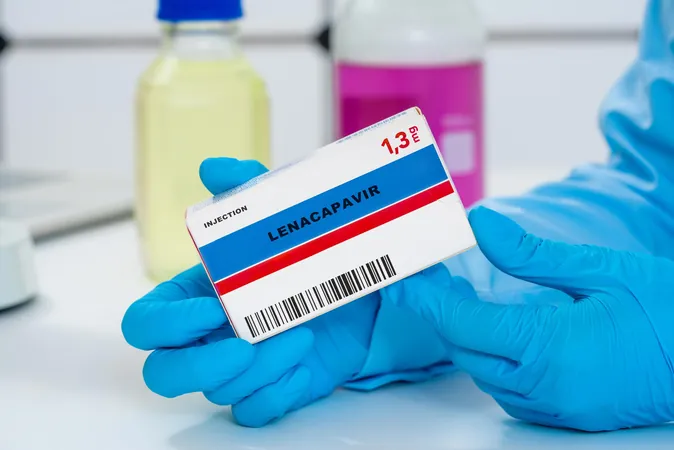
NASA's Bold Experiment: Shrinking Metals Could Unlock Exoplanet Discoveries!
2025-07-02
Author: Li
NASA's Ingenious Solution to Space Telescope Challenges
In a groundbreaking initiative, NASA is investigating a revolutionary metal alloy known for its unique ability to shrink when heated. This innovative approach is seen as crucial for the success of the upcoming Habitable Worlds Observatory (HBO), a monumental project set to enhance our search for exoplanets.
The Dilemma of Expanding Metals in Space
Traditionally, metals expand with heat, posing significant challenges for space telescopes. As noted in a recent NASA blog post, when components of these telescopes warm up and expand, the shape of their mirrors can warp, making precise observations nearly impossible.
Proven Solutions and the Future of Space Telescopes
NASA has already tackled this issue with materials used in the James Webb Space Telescope and the upcoming Nancy Grace Roman Space Telescope, planned for launch in 2027. However, the HBO will require even more resilient materials to achieve its ambitious goals.
The Quest for Exoplanets: A Complicated Challenge
So, what exactly does it take to observe exoplanets? As light filters through a planet’s atmosphere or reflects off its surface, telescopes can decode the light's intensity and spectrum—essentially its 'color'—to discern the gases present in an exoplanet's atmosphere. But there's a catch: capturing these minute details is a Herculean task, especially since exoplanets are often dwarfed by the blinding light of their host stars.
A Contrast Ratio Like No Other!
To make this possible, the HBO must achieve a staggering contrast ratio of one to one billion (1:1,000,000,000), meaning it needs to be 1,000 times more stable than the James Webb telescope!
Alloy 30: The Game-Changer for Thermal Expansion
This is why NASA is collaborating with a company named ALLVAR to explore a peculiar material known as a "negative thermal expansion" (NTE) alloy, which actually shrinks in response to heat. Imagine a 1-meter piece of this alloy shrinking by just 0.003 mm for every degree Celsius increase in temperature! This unique property allows Alloy 30 to counteract the expansion of other materials effectively.
Promising Test Results Fuel Optimism
Initial tests have shown considerable promise. ALLVAR created a test mirror utilizing struts made of a titanium alloy, which expands when heated. Remarkably, the Alloy 30 was able to offset this expansion, resulting in a stable mirror. NASA's findings suggest that Alloy 30 also enhances thermal management while combating temperature fluctuations affecting critical components.
Endless Possibilities Ahead
With these encouraging results, the space community is buzzing with ideas on how to leverage Alloy 30 in various space missions. Interestingly, NASA has made this advanced alloy commercially available, boasting washers and spacers that promise to maintain consistent performance across extreme temperature fluctuations.
Could This Be the Key to Discovering New Worlds?
As NASA continues to explore the vastness of space, innovations like Alloy 30 may just be the key to unlocking the secrets of distant worlds. Stay tuned, as the race to find new exoplanets takes a thrilling new turn!

 Brasil (PT)
Brasil (PT)
 Canada (EN)
Canada (EN)
 Chile (ES)
Chile (ES)
 Česko (CS)
Česko (CS)
 대한민국 (KO)
대한민국 (KO)
 España (ES)
España (ES)
 France (FR)
France (FR)
 Hong Kong (EN)
Hong Kong (EN)
 Italia (IT)
Italia (IT)
 日本 (JA)
日本 (JA)
 Magyarország (HU)
Magyarország (HU)
 Norge (NO)
Norge (NO)
 Polska (PL)
Polska (PL)
 Schweiz (DE)
Schweiz (DE)
 Singapore (EN)
Singapore (EN)
 Sverige (SV)
Sverige (SV)
 Suomi (FI)
Suomi (FI)
 Türkiye (TR)
Türkiye (TR)
 الإمارات العربية المتحدة (AR)
الإمارات العربية المتحدة (AR)